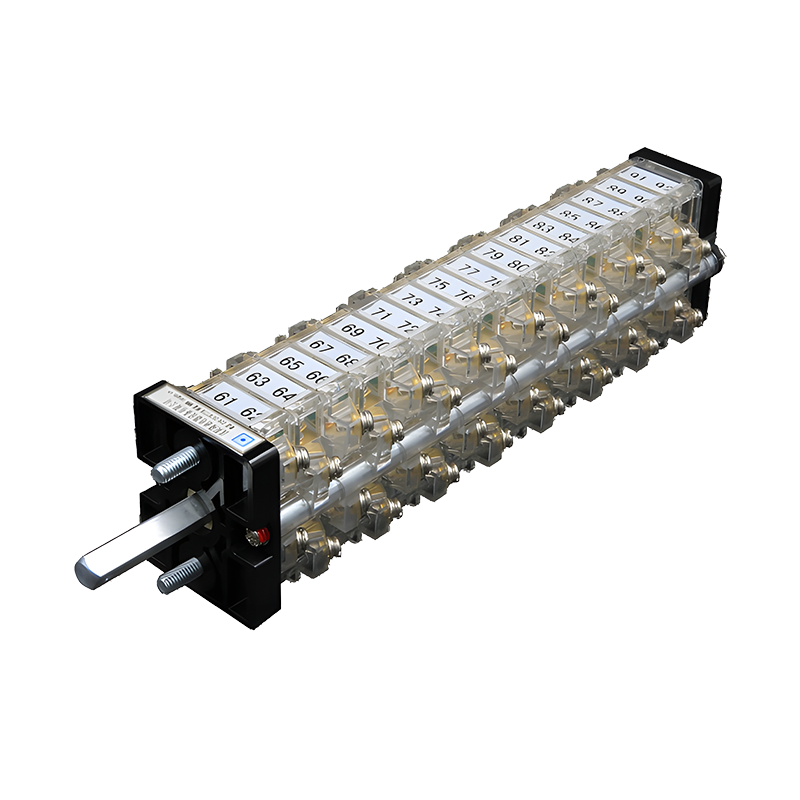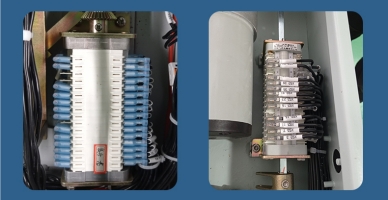

Power GIS auxiliary switch: a powerful tool to improve the efficiency of energy systems
Release time:2023-10-23
Power GIS auxiliary switch: a powerful tool to improve the efficiency of energy systems
As an advanced power equipment, the power GIS system is widely used in the energy field, providing reliable support for the safe operation and efficient management of energy systems. As an important part of the power GIS system, auxiliary switches play a key role in practical applications. This article will provide an in-depth introduction to the functions, advantages and application fields of power GIS auxiliary switches, aiming to provide readers with a comprehensive and detailed understanding.

The power GIS auxiliary switch is a reliable switching device used for GIS equipment. It can realize switching, control and protection of the GIS system. Compared with traditional switches, power GIS auxiliary switches have the characteristics of strong flexibility, high stability, and simple operation. By turning on and off the auxiliary switch, flexible control of power equipment can be achieved while ensuring system stability. Whether it is switching operating status, system expansion or fault handling, power GIS auxiliary switches can play an important role.
Power GIS auxiliary switches are widely used in energy systems. First of all, in the power station, the power GIS auxiliary switch can realize the parallel connection and switching of the generating sets to ensure the continuous power supply of the power generation system. Secondly, in substations, power GIS auxiliary switches can be used to open and disconnect high-voltage lines, as well as to maintain and repair substation equipment. In addition, in the power transmission and distribution system, the power GIS auxiliary switch can also realize power transmission and distribution control between different areas to ensure the normal operation of the power grid.
In addition to its wide range of applications, power GIS auxiliary switches also have many advantages. First of all, it uses advanced technology and materials and has high-pressure load capacity and high-pressure resistance. Secondly, the power GIS auxiliary switch has a low leakage rate and arc generation rate, which can effectively protect the safety of equipment and personnel. In addition, the power GIS auxiliary switch also has automatic control and remote monitoring functions, which improves management efficiency and operational reliability.

It should be noted that the selection and design of power GIS auxiliary switches need to take into account specific application scenarios and needs. Different engineering projects and power systems may require different types of auxiliary switches. Therefore, when selecting a power GIS auxiliary switch, the supplier's qualifications, equipment performance indicators and project requirements should be comprehensively considered to ensure that suitable products are selected.
To sum up, the power GIS auxiliary switch, as an important part of the power GIS system, plays a vital role in the stability and reliability of the energy system. Through the flexible control and protection of power GIS auxiliary switches, efficient operation and optimal management of the energy system can be achieved. With the continuous advancement of power technology and the widespread promotion of applications, power GIS auxiliary switches will surely play a more important role in the energy field.
As an advanced power equipment, the power GIS system is widely used in the energy field, providing reliable support for the safe operation and efficient management of energy systems. As an important part of the power GIS system, auxiliary switches play a key role in practical applications. This article will provide an in-depth introduction to the functions, advantages and application fields of power GIS auxiliary switches, aiming to provide readers with a comprehensive and detailed understanding.

The power GIS auxiliary switch is a reliable switching device used for GIS equipment. It can realize switching, control and protection of the GIS system. Compared with traditional switches, power GIS auxiliary switches have the characteristics of strong flexibility, high stability, and simple operation. By turning on and off the auxiliary switch, flexible control of power equipment can be achieved while ensuring system stability. Whether it is switching operating status, system expansion or fault handling, power GIS auxiliary switches can play an important role.
Power GIS auxiliary switches are widely used in energy systems. First of all, in the power station, the power GIS auxiliary switch can realize the parallel connection and switching of the generating sets to ensure the continuous power supply of the power generation system. Secondly, in substations, power GIS auxiliary switches can be used to open and disconnect high-voltage lines, as well as to maintain and repair substation equipment. In addition, in the power transmission and distribution system, the power GIS auxiliary switch can also realize power transmission and distribution control between different areas to ensure the normal operation of the power grid.
In addition to its wide range of applications, power GIS auxiliary switches also have many advantages. First of all, it uses advanced technology and materials and has high-pressure load capacity and high-pressure resistance. Secondly, the power GIS auxiliary switch has a low leakage rate and arc generation rate, which can effectively protect the safety of equipment and personnel. In addition, the power GIS auxiliary switch also has automatic control and remote monitoring functions, which improves management efficiency and operational reliability.

It should be noted that the selection and design of power GIS auxiliary switches need to take into account specific application scenarios and needs. Different engineering projects and power systems may require different types of auxiliary switches. Therefore, when selecting a power GIS auxiliary switch, the supplier's qualifications, equipment performance indicators and project requirements should be comprehensively considered to ensure that suitable products are selected.
To sum up, the power GIS auxiliary switch, as an important part of the power GIS system, plays a vital role in the stability and reliability of the energy system. Through the flexible control and protection of power GIS auxiliary switches, efficient operation and optimal management of the energy system can be achieved. With the continuous advancement of power technology and the widespread promotion of applications, power GIS auxiliary switches will surely play a more important role in the energy field.
